| Conservatism and the Rise of Ronald Reagan Reading with Questions |
|---|
| www.studenthandouts.com ↣ American History ↣ American History Readings |
For many Americans, the economic, social, and political trends of the previous two decades – crime and racial polarization in many urban centers, challenges to traditional values, the economic downturn and inflation of the Carter years – engendered a mood of disillusionment. It also strengthened a renewed suspicion of government and its ability to deal effectively with the country's social and political problems.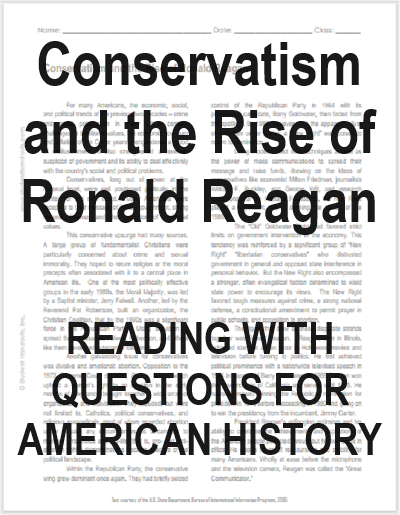 Conservatives, long out of power at the national level, were well positioned politically in the context of this new mood. Many Americans were receptive to their message of limited government, strong national defense, and the protection of traditional values.
Conservatives, long out of power at the national level, were well positioned politically in the context of this new mood. Many Americans were receptive to their message of limited government, strong national defense, and the protection of traditional values.This conservative upsurge had many sources. A large group of fundamentalist Christians were particularly concerned about crime and sexual immorality. They hoped to return religion or the moral precepts often associated with it to a central place in American life. One of the most politically effective groups in the early 1980s, the Moral Majority, was led by a Baptist minister, Jerry Falwell. Another, led by the Reverend Pat Robertson, built an organization, the Christian Coalition, that by the 1990s was a significant force in the Republican Party. Using television to spread their messages, Falwell, Robertson, and others like them developed substantial followings. Another galvanizing issue for conservatives was divisive and emotional: abortion. Opposition to the 1973 Supreme Court decision, Roe v. Wade, which upheld a woman's right to an abortion in the early months of pregnancy, brought together a wide array of organizations and individuals. They included, but were not limited to, Catholics, political conservatives, and religious evangelicals, most of whom regarded abortion under virtually any circumstances as tantamount to murder. Pro-choice and pro-life (that is, pro- and anti-abortion rights) demonstrations became a fixture of the political landscape. Within the Republican Party, the conservative wing grew dominant once again. They had briefly seized control of the Republican Party in 1964 with its presidential candidate, Barry Goldwater, then faded from the spotlight. By 1980, however, with the apparent failure of liberalism under Carter, a "New Right" was poised to return to dominance. Using modern direct mail techniques as well as the power of mass communications to spread their message and raise funds, drawing on the ideas of conservatives like economist Milton Friedman, journalists William F. Buckley, and George Will, and research institutions like the Heritage Foundation, the New Right played a significant role in defining the issues of the 1980s. The "Old" Goldwater Right had favored strict limits on government intervention in the economy. This tendency was reinforced by a significant group of "New Right" "libertarian conservatives" who distrusted government in general and opposed state interference in personal behavior. But the New Right also encompassed a stronger, often evangelical faction determined to wield state power to encourage its views. The New Right favored tough measures against crime, a strong national defense, a constitutional amendment to permit prayer in public schools, and opposition to abortion. The figure that drew all these disparate strands together was Ronald Reagan. Reagan, born in Illinois, achieved stardom as an actor in Hollywood movies and television before turning to politics. He first achieved political prominence with a nationwide televised speech in 1964 in support of Barry Goldwater. In 1966 Reagan won the governorship of California and served until 1975. He narrowly missed winning the Republican nomination for president in 1976 before succeeding in 1980 and going on to win the presidency from the incumbent, Jimmy Carter. President Reagan's unflagging optimism and his ability to celebrate the achievements and aspirations of the American people persisted throughout his two terms in office. He was a figure of reassurance and stability for many Americans. Wholly at ease before the microphone and the television camera, Reagan was called the "Great communicator." Taking a phrase from the 17th-century Puritan leader John Winthrop, he told the nation that the United States was a "shining city on a hill," invested with a God-given mission to defend the world against the spread of communist totalitarianism. Reagan believed that government intruded too deeply into American life. He wanted to cut programs he contended the country did not need, and to eliminate "waste, fraud, and abuse." Reagan accelerated the program of deregulation begun by Jimmy Carter. He sought to abolish many regulations affecting the consumer, the workplace, and the environment. These, he argued, were inefficient, expensive, and detrimental to economic growth. Reagan also reflected the belief held by many conservatives that the law should be strictly applied against violators. Shortly after becoming president, he faced a nationwide strike by U.S. air transportation controllers. Although the job action was forbidden by law, such strikes had been widely tolerated in the past. When the air controllers refused to return to work, he ordered them all fired. Over the next few years the system was rebuilt with new hires. Directions: Read the text above, then answer the questions below. 1. What factors led conservatives to return to power in the United States? 2. What were the general beliefs of conservatives? 3. Describe the Moral Majority and the Christian Coalition. 4. What landmark 1973 Supreme Court decision made abortion a focus of the conservative movement? 5. Explain the differences between the "Old Right" and the "New Right." 6. Who was elected president in 1980? 7. Describe the actions and policies of Ronald Reagan. Click here to print this worksheet. Answers are below. Answer Key: 1. Service jobs (e.g., retail clerks, office workers, teachers, physicians, and government employees) 2. Service-sector activity benefited; hardware and software could aggregate previously unimagined amounts of data about economic and social trends 3. Apple 4. Japan 5. Percentage of family households dropped; a quarter of all groups were now classified as "nonfamily households" in which two or more unrelated persons lived together 6. Asia and Latin America 7. AIDS (Acquired Immune Deficiency Syndrome) |
 | 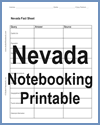 |  | 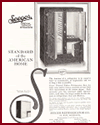 | 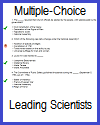 | 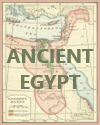 |
| UNIT I: | Early America | UNIT IX: | Discontent and Reform | ||
| UNIT II: | Colonial Period | UNIT X: | War, Prosperity, and Depression | ||
| UNIT III: | American Revolution | UNIT XI: | New Deal and World War II | ||
| UNIT IV: | New National Government | UNIT XII: | Postwar America | ||
| UNIT V: | Westward Expansion | UNIT XIII: | Decades of Change | ||
| UNIT VI: | Sectional Conflict | UNIT XIV: | New Conservatism | ||
| UNIT VII: | Civil War and Reconstruction | UNIT XV: | Into the Twenty-first Century | ||
| UNIT VIII: | Growth and Transformation | UNIT XVI: | Polarization and Deglobalization |
| www.studenthandouts.com ↣ American History ↣ American History Readings |








